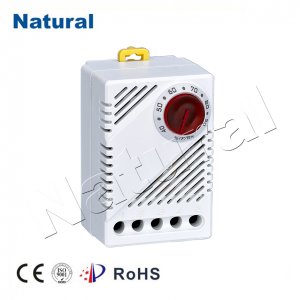Hygrostat Thermostats: A Marvel of Climate Control Technology

In the realm of home and industrial climate control, precision is paramount. Maintaining the ideal temperature and humidity levels can be a challenging task, but thanks to advancements in technology, it has become more achievable than ever. One such technological marvel is the hygrostat thermostat. In this article, we will delve into the intricacies of hygrostat thermostats, exploring their functionality, applications, and benefits. What Is a Hygrostat Thermostat? A hygrostat thermostat is a device designed to regulate both temperature and humidity levels within a given environment. Unlike traditional thermostats that solely control temperature, hygrostat thermostats offer a comprehensive solution for achieving and maintaining the perfect climate conditions. How Does It Work? The operation of a hygrostat thermostat involves two primary sensors: a temperature sensor and a humidity sensor. These sensors continuously monitor the ambient conditions within the controlled space. When the temperature deviates from the setpoint, the thermostat activates the heating or cooling system to bring the temperature back to the desired level. Simultaneously, if the humidity level falls outside the specified range, the hygrostat thermostat engages a humidifier or dehumidifier to restore optimal humidity. The key to the hygrostat thermostat’s effectiveness lies in its ability to adjust both temperature and humidity simultaneously, ensuring a comfortable and healthy environment for occupants or preserving the quality of products in industrial settings. Applications of Hygrostat Thermostats Home Climate Control: Hygrostat thermostats are widely used in residential HVAC (heating, ventilation, and air conditioning) systems. They help maintain indoor comfort by preventing temperature and humidity fluctuations. Industrial Processes: Many industrial processes, such as food production and pharmaceutical manufacturing, require strict control over both temperature and humidity. Hygrostat thermostats play a critical role in maintaining product quality and process efficiency. Greenhouses: In agriculture, greenhouses rely on hygrostat thermostats to create the ideal environment for plant growth. These devices ensure that plants receive the right balance of temperature and humidity for optimal development. Museums and Art Galleries: Precious artifacts, paintings, and sculptures are sensitive to environmental conditions. Hygrostat thermostats help protect these valuable items by regulating the climate within museums and art galleries. Benefits of Using Hygrostat Thermostats Energy Efficiency: By controlling both temperature and humidity, hygrostat thermostats reduce energy consumption compared to using separate devices for heating, cooling, and humidity control. Comfort and Health: In homes and offices, maintaining the right humidity levels can improve comfort and promote better health. Hygrostat thermostats create a more pleasant living and working environment. Product Quality: Industries that rely on precise climate control benefit from improved product quality and reduced waste when using hygrostat thermostats. Preservation: Museums, archives, and libraries depend on these thermostats to safeguard valuable historical artifacts and documents for future generations. Automation: Hygrostat thermostats can be integrated into smart home and building automation systems, allowing for remote control and programming, further enhancing convenience and energy savings. Conclusion Hygrostat thermostats represent a significant advancement in climate control technology. Their ability to regulate temperature and humidity simultaneously makes them indispensable in various applications, from homes to industries. By providing energy efficiency, improved comfort, and enhanced product quality, these devices have become essential tools for achieving the perfect climate control balance. As technology continues to evolve, hygrostat thermostats will likely play an even more prominent role in shaping our future, creating environments that are not only comfortable but also sustainable and efficient.